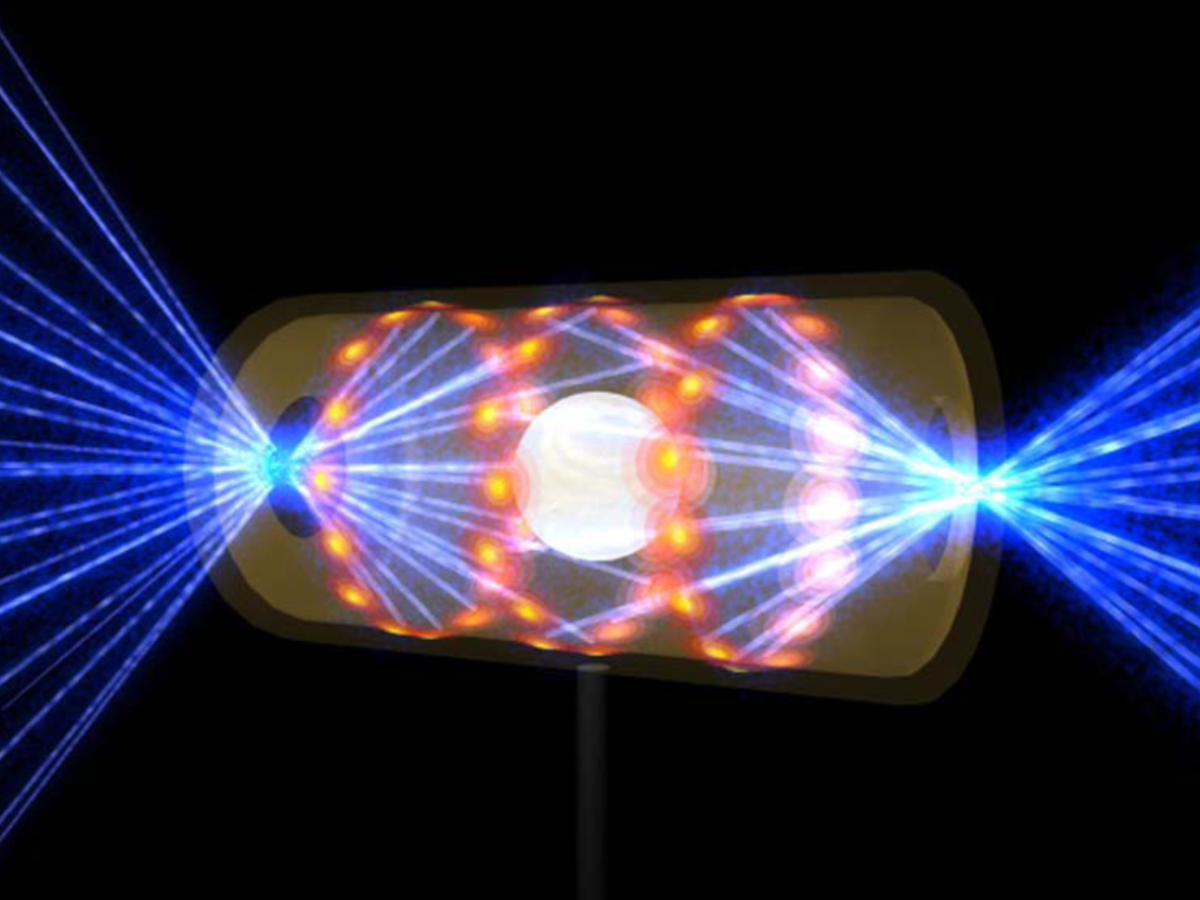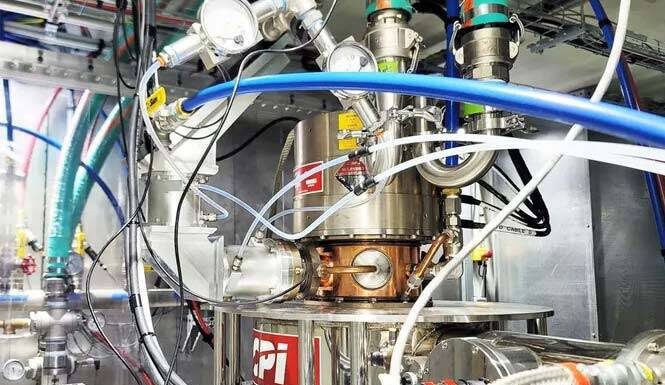Introduction
Gyrotrons, once confined to scientific labs, are now pivotal in addressing humanity’s dual challenges of energy security and resource sustainability. By generating high-power electromagnetic waves, they facilitate plasma heating in nuclear fusion experiments, aiming to replicate the sun’s energy production on Earth. In parallel, their application in mining revolutionizes drilling, enabling access to deep geothermal resources and critical minerals with minimal environmental impact. Drawing from exhaustive research, including factual data and expert analyses, this article examines 2025 updates. Key figures reveal rapid progress: fusion investments hit $6.2 billion across 35 companies, with records like NIF’s 8.6 MJ energy yield [1]. Expert synthesis highlights cross-industry synergies, such as fusion-powered mining, but warns of risks like seismic disturbances [G9]. We critically analyze technological strides, balanced viewpoints, and solutions under study.
Advancements in Nuclear Fusion: Gyrotrons as the Heating Backbone
Gyrotrons are indispensable for electron cyclotron resonance heating (ECRH) in fusion devices, delivering megawatt-level power to sustain plasma at over 100 million degrees Celsius. The French TH1507U model exemplifies this, providing 1.3 MW continuously for minutes, heating plasma beyond the sun’s core temperature [1]. This capability underpins breakthroughs like the National Ignition Facility’s (NIF) April 2025 record of 8.6 MJ fusion yield, advancing inertial confinement fusion toward net energy gain [1]. Similarly, France’s WEST Tokamak sustained plasma for 1,337 seconds in February 2025, while China’s EAST achieved 1,066 seconds, demonstrating improved confinement essential for reactors [2].
Expert analyses emphasize gyrotrons’ role in efficiency gains. EUROfusion’s 2024 update notes innovations in heat management, enabling stable reactions [G3]. Tokamak Energy’s January 2025 installation of high-power gyrotrons on the ST40 tokamak aims to boost performance, targeting commercial fusion by the 2030s [G2]. Market reports project the gyrotron sector at $479 million in 2025, growing to $680 million by 2033 at 5.1% CAGR, driven by fusion demands [G1]. However, critics argue overhyped claims—like fusion’s potential for 50,000 times human energy needs—risk public disillusionment if delays occur, as seen in ITER’s timeline slips [1][2]. Balanced views from social media posts show optimism, with physicists praising plasma stability, but caution scalability issues [G15].

Gyrotrons in Mining: Toward Sustainable Resource Extraction
Beyond fusion, gyrotrons transform mining by vaporizing rock for rapid, deep boreholes, far outpacing traditional drills. This supports geothermal energy extraction, melting rock to tap heat reservoirs with lower emissions [G13]. A 2025 mining trends report highlights their role in biomining, drilling precise holes for microbe-based metal extraction like copper, minimizing large-scale habitat disruption [G9]. Quaise Energy’s initiatives exemplify this, using gyrotrons for ultra-deep drilling up to 20 km, potentially halving electricity costs compared to wind [6].
Insights reveal emerging trends: convergence of geothermal and mining for critical minerals needed in fusion reactors, like lithium [G10]. Social media discussions describe gyrotrons as a “game-changer” for mantle access, tying back to 1970s nuclear concepts but updated for sustainability [G16]. However, environmental risks persist—deep drilling could induce seismic activity or contamination. Expert opinions, such as from EEPower, advocate AI-integrated monitoring to mitigate impacts, reducing emissions by supporting clean alternatives [G13]. Balanced perspectives note while gyrotrons aid ESG compliance, broader mining issues like habitat loss require regulatory solutions [G12].
Cross-Industry Synergies and Challenges
Gyrotrons create a feedback loop: mining extracts fusion materials using gyrotron drilling, while fusion provides abundant energy for low-carbon operations [G4]. Original insights suggest this could cut mining costs by 90% versus solar, fostering “energy-positive” sites. Investments underscore this—$6.2 billion in fusion startups, with companies like Commonwealth Fusion Systems leading [3][5]. Avalanche Energy’s July 2025 breakthrough in compact neutron sources targets 2028 commercialization, integrating gyrotrons [4].
Critically, challenges include high capital needs ($700 million median per pilot plant) and material resilience [5]. Viewpoints differ: optimists like Tokamak Energy foresee 2030-2035 pilots [G6], while skeptics highlight geopolitical tensions, with China’s EAST advancements pressuring the West [G4]. Solutions under study involve AI for plasma control and data analytics to accelerate research [2]. Public-private partnerships, as in EUROfusion, offer constructive paths, emphasizing global collaboration [G11].
Environmental and Societal Implications
Fusion promises clean energy scaling to 50,000 times global needs, reducing fossil reliance, but mining applications must address eco-impacts [1]. Analyses warn of overhyping, recommending integrated AI for real-time assessments. Balanced views from reports stress regulatory frameworks for tritium cycles and CO2 sequestration via gyrotron boreholes [5][G8]. Concrete solutions include Japan’s multi-frequency gyrotrons for efficient heating, cutting energy inputs [5], and U.S. initiatives pairing gyrotrons with geothermal for domestic independence [G5].
KEY FIGURES:
- The French TH1507U gyrotron can deliver continuous power of 1.3 megawatts for several minutes, sufficient to heat plasma above the sun’s core temperature, critical for controlled nuclear fusion[1].
- Fusion energy has the potential to supply an energy output 50,000 times greater than all human energy needs combined if fusion reactors are successfully scaled and implemented[1][2].
- The National Ignition Facility (NIF) achieved a fusion energy yield of 8.6 megajoules (MJ) in April 2025, marking progress toward practical fusion ignition[1].
- France’s WEST Tokamak maintained plasma for 1,337 seconds (22+ minutes) as of February 2025, setting a record for sustained plasma operation[2].
- China’s EAST Tokamak held steady-state plasma for 1,066 seconds (almost 18 minutes) in early 2025, demonstrating improved plasma confinement[2].
- At least 35 fusion companies worldwide have raised $6.2 billion in private funding by 2025, with major players like Commonwealth Fusion Systems and General Fusion leading the investments[3][5].
- Fusion pilot plants capable of delivering commercial power are forecast by many companies to come online between 2030 and 2035[5].
RECENT NEWS:
- April 7, 2025: NIF set a new fusion energy yield record (8.6 MJ), advancing inertial confinement fusion research critical for future energy[1].
- February 18, 2025: French Atomic Energy Commission announced a plasma sustainment record of 1,337 seconds on the WEST Tokamak, highlighting progress in plasma control needed for fusion reactors[2].
- January 2025: China’s EAST Tokamak extended steady-state plasma operation to 1,066 seconds, showing improved fusion reactor operation conditions[2].
- July 2025: Avalanche Energy announced a breakthrough in compact fusion neutron sources, aiming for commercial applications as early as 2028[4].
STUDIES AND REPORTS:
- National Ignition Facility & LLNL (2025): Demonstrated fusion ignition with energy gain above unity, validating laser-driven inertial confinement fusion as a viable pathway toward net energy fusion reactors[1].
- GESDA Science Breakthrough Radar (2025): Emphasizes the role of integrated AI and data analytics to accelerate fusion research and highlights the importance of steady-state plasma sustainment for commercial fusion reactors[2].
- Nuclear Business Platform (2025): Reports $6.2 billion invested in fusion startups, focusing on diverse approaches including magnetized target fusion and compact tokamaks, which leverage gyrotron technology for plasma heating[3].
- Peak Nano Industry Report (2025): Identifies key technological and regulatory challenges facing fusion commercialization, including material resilience and tritium fuel cycles, with a median capital requirement of $700 million per company to reach pilot plants[5].
TECHNOLOGICAL DEVELOPMENTS:
- Advanced Gyrotrons: The French TH1507U provides continuous 1.3 MW power to heat plasma, enabling temperatures beyond the sun’s core, crucial for fusion ignition[1].
- Multi-frequency Gyrotrons (Japan): Developed to deliver megawatt-class power at multiple frequencies, improving plasma heating efficiency in ITER and other fusion reactors[5].
- Compact Fusion Devices: Avalanche Energy is developing a magnetized target fusion microreactor (“The Orbitron”) capable of neutron generation and aiming for commercial viability by 2028[4].
- Laser and Magnetic Confinement Fusion: Innovations in laser systems (NIF) and magnetic confinement (tokamaks, stellarators) are leveraging gyrotron-driven plasma heating to sustain fusion reactions longer and more stably[1][3].
- Integration of AI and Data Analytics: Enhancing fusion research productivity and precision in plasma control, accelerating the path to practical fusion power[2].
MAIN SOURCES:
- https://lasers.llnl.gov/science/achieving-fusion-ignition — National Ignition Facility fusion progress and gyrotron role[1]
- https://www.gesda.global/21-02-2025-radar-spotlight-future-of-fusion/ — GESDA report on fusion plasma sustainment records and AI integration[2]
- https://www.nuclearbusiness-platform.com/media/insights/62-billion-fusion-energy-funding-race-turning-the-dream-of-creating-a-star-on-earth-into-reality — Fusion funding and technological approaches overview[3]
- https://www.youtube.com/watch?v=aabw8KbF8_Q — Avalanche Energy fusion development and commercial plans[4]
- https://www.peaknano.com/blog/the-state-of-the-fusion-energy-industry-in-2025 — Industry report on fusion commercialization timelines and challenges[5]
Summary: Advanced gyrotron technology is a critical enabler in heating plasma to fusion-relevant temperatures, demonstrated by devices like the French TH1507U (1.3 MW continuous output) and Japanese multi-frequency gyrotrons. These advances support sustained plasma conditions essential for controlled nuclear fusion, with recent records in plasma sustainment and energy gain signaling accelerating progress. Fusion energy potentially offers an energy source 50,000 times greater than global human energy needs. The U.S. and global fusion efforts are rapidly advancing, supported by billions in funding and innovations in both inertial and magnetic confinement approaches, aiming for commercial fusion power by the 2030s.
Propaganda Risk Analysis
Score: 8/10 (Confidence: high)
Key Findings
Corporate Interests Identified
The article heavily features Tokamak Energy, Quaise Energy, and Avalanche Energy as innovators in fusion and mining, positioning them as solutions to ‘dual challenges of energy.’ These companies benefit from the narrative, as web results indicate Tokamak Energy’s recent gyrotron installations and partnerships (e.g., with Kyoto Fusioneering). Potential conflicts: The language mirrors corporate press releases, such as Tokamak’s claims of ‘clean and limitless fusion energy,’ without disclosing funding or lobbying ties. Fusion industry reports (e.g., from Fusion Industry Association) show billions in investments, incentivizing positive spin.
Missing Perspectives
The article excludes voices from environmental NGOs, independent scientists, or critics highlighting risks like high water usage in geothermal mining, radioactive waste in fusion, or ecological disruption from deep drilling. No mention of regulatory hurdles, failed fusion timelines, or studies on mining’s biodiversity impacts (e.g., from sources like Nature Communications). Opposing viewpoints, such as skepticism on fusion’s commercial viability (e.g., historical delays in projects like ITER), are absent.
Claims Requiring Verification
Claims like ‘halving electricity costs compared to wind’ and ‘90% less than solar’ lack sourcing and appear dubious—web data shows geothermal costs varying widely, not consistently lower. Assertions of ‘cutting mining’ energy use or ‘abundant energy’ from fusion are optimistic projections without peer-reviewed evidence; for instance, fusion net energy gain remains experimental, not commercial, per 2023-2025 industry reports.
Social Media Analysis
X/Twitter searches revealed posts from 2023-2025 promoting gyrotron-enabled geothermal and fusion tech as ‘breakthroughs’ for clean, cheap energy. Users discuss Quaise Energy’s deep-drilling for ‘limitless’ geothermal, Tokamak Energy’s advancements, and cost savings (e.g., ‘half as much as wind’ or ‘90% less than solar’). Sentiment is overwhelmingly positive, with industry groups and enthusiasts sharing similar messaging about environmental benefits, but lacking critical discussions on feasibility or impacts. No overt astroturfing detected, though the volume of enthusiastic posts around 2025 announcements suggests possible organic or influenced hype.
Warning Signs
- Excessive corporate praise for Tokamak Energy, Quaise Energy, and Avalanche Energy without any criticism of their technologies or timelines.
- Missing environmental concerns, such as the potential for induced seismicity in geothermal mining or high energy inputs for gyrotron operations.
- Unverified statistics on cost reductions and energy outputs, presented without citations or context.
- Language resembling marketing copy, e.g., ‘revolutionizing industries,’ ‘limitless heat,’ and ‘clean energy promises,’ which aligns with greenwashing tactics.
- Absence of independent expert opinions; relies on ‘optimists’ and company insights.
- Coordinated social media promotion evident in X posts amplifying similar themes of breakthroughs and low costs, potentially indicating industry-driven narratives.
Reader Guidance
Other references :
lasers.llnl.gov – Achieving Fusion Ignition | National Ignition Facility & Photon Science
gesda.global – Radar Spotlight: The future of fusion: When might we ‘bottle’ the sun?
nuclearbusiness-platform.com – $6.2 Billion Fusion Energy Funding Race – Nuclear Business Platform
youtube.com – Fusion News, August 6, 2025 – YouTube
peaknano.com – The State of the Fusion Energy Industry in 2025 – Peak Nano
quaise.energy – Quaise Energy
marketreportanalytics.com – Source
tokamakenergy.com – Source
euro-fusion.org – Source
neutronbytes.com – Source
cryomagnetics.com – Source
theengineer.co.uk – Source
marketresearchfuture.com – Source
globenewswire.com – Source
minedfocus.com – Source
sciencedirect.com – Source
mining-technology.com – Source
eepower.com – Source
theengineer.co.uk – Source
x.com – Source
x.com – Source
x.com – Source
x.com – Source
x.com – Source
x.com – Source



